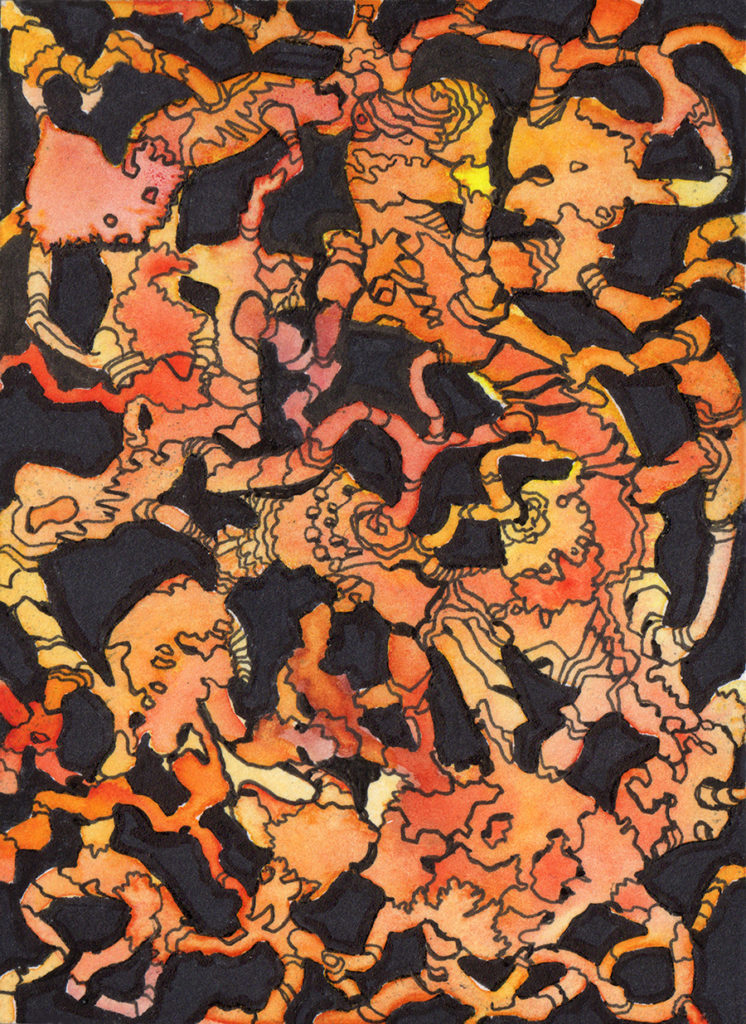Watercolour obsession
a retrospective
Inspired by the Surrealists’ Automatic creative practices, I started applying it to creating character design concepts for a children’s’ book pitch. I then and moved on to automatic watercolour and pen meditative exercises. I love to watch watercolours and ink washes do their thing, as they mingle and flow. It’s a dance of guiding the paint and letting it dictate where it needs to be. The resulting patterns I can draw over, or not, are always perfect.

Experiment mode
A growing realisation that I needed to push my comfort zone led to testing random techniques for painting drawing over watercolours. It involved drawing over sections, creating layers of depth, playing with linewidths, and generally training my eye.
What did I learn?
I pushed some of these further into different directions than I’ve gone before. Not only is it a meditative act but the practice is creatively replenishing. Using pen over watercolour gives me more possibilities of pattern-making and shape language.

The Big Picture radio interview
I realised i hadn’t published this at all. It’s all about the Joker film, identity, and feeling uneasy in a cinema. I rudely dominate the conversation throughout













